
Greyhound Anatomy Anatomical Charts & Posters
With a keen understanding of their anatomy, Greyhound owners and trainers can unlock the secrets of the Greyhound's success and help them reach their full potential as a champion racer. TAGGED: breed facts, dogs facts, unknown dogs, rare dogs, best dogs. Share This Article. Facebook Twitter Reddit Copy Link Print. Share. What do you think?
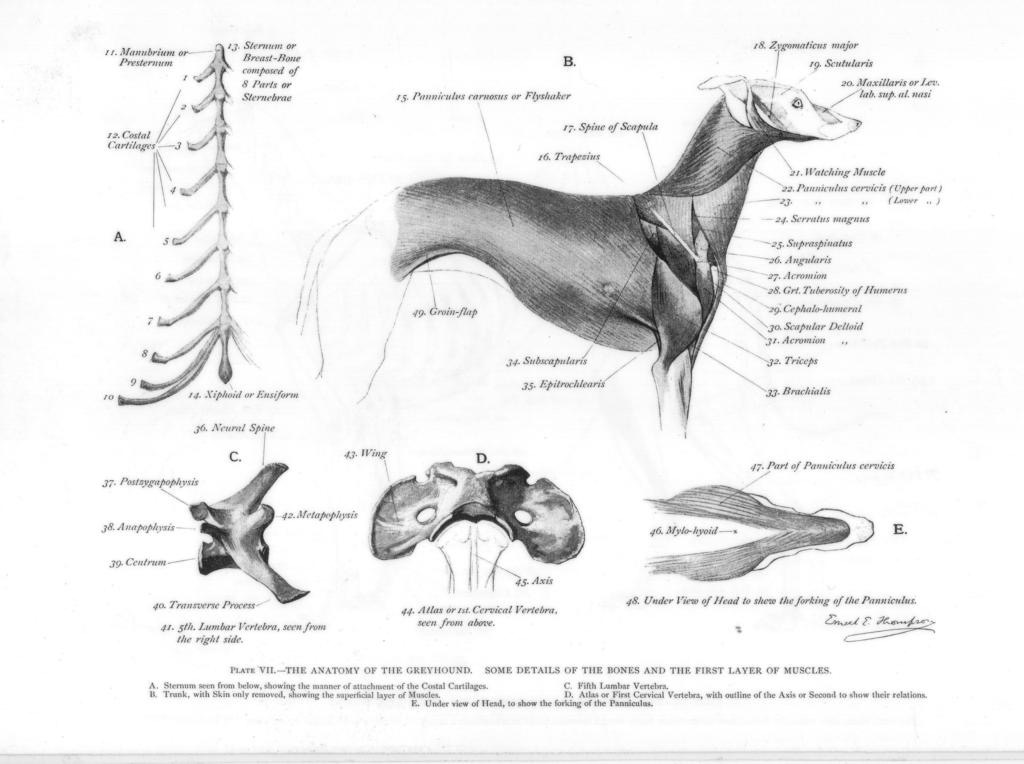
Greyhound Anatomy Drawings The Health of the racing Greyhound
The earliest confirmed records of dogs with greyhound-type features date back about 8000 years! Interestingly, all sighthounds that exist today are descendants of the ancient greyhound.. Anatomy and Characteristics. Greyhounds are a unique dog breed with distinct appearance and characteristics. They have long, slender bodies, powerful legs.
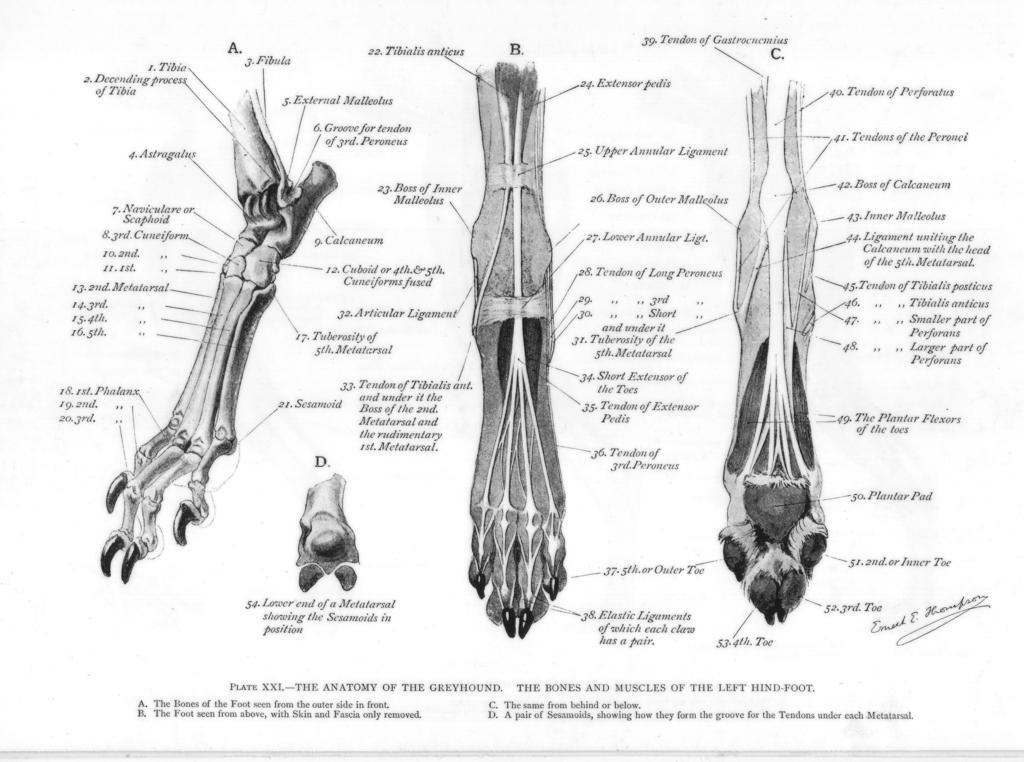
Greyhound Anatomy Drawings The Health of the racing Greyhound
Size: 60-70 pounds (27-32 kg) Lifespan: 10-14 years Coat: Short, sleek coat that comes in a variety of colors, including black, fawn, blue, brindle, and more. Temperament: Greyhounds are known for.
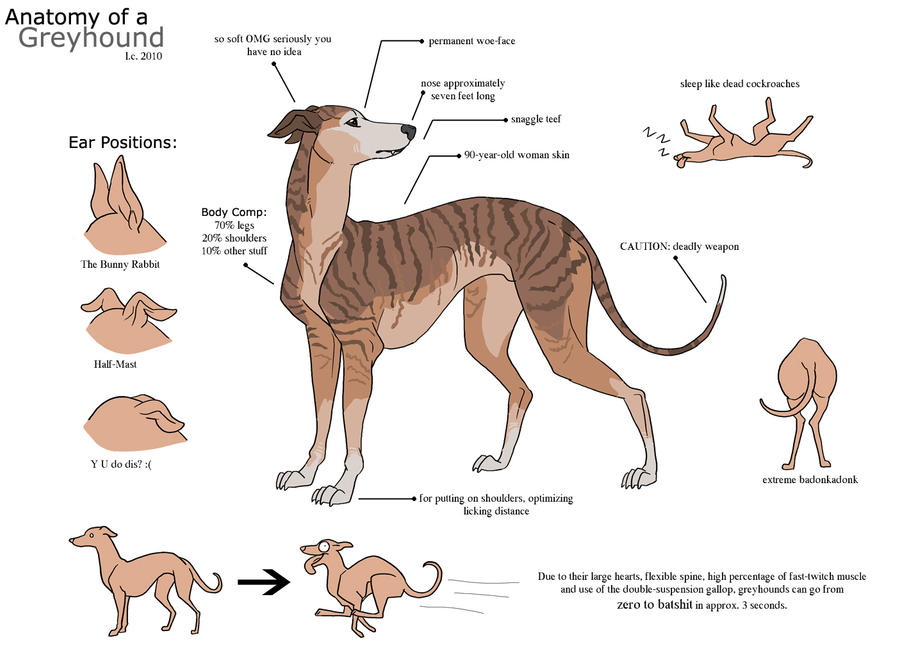
Anatomy of a Greyhound by aureath on DeviantArt
'The Anatomy of the Greyhound' wall chart is the result of over 18 months of careful dissection, photography and illustrative documentation of canine anatomy. The chart was specifically designed as a teaching aid for trainers wishing to detect and treat injuries of the musculoskeletal system.

Greyhound Anatomy Diagram Back and Front Views of the Skeleton and the Important Muscles
Greyhounds have larger muscle mass than most breeds 1; higher HCTs 2; lengthened carpal, tarsal, metacarpal, and metatarsal bones; and a keen sense of sight. 1 These adaptations, among others, have probably contributed to the unique hematologic and biochemical characteristics of Greyhounds compared with those of non-Greyhound breeds, and these c.

Greyhound Anatomy Chart Vet Equip Australia Pty Ltd
Anatomy of the Greyhound Chart. Hi [First Name], Greyhound-Data are now the agents for these charts in all countries excluding Australia and New Zealand. This chart is ideal to have up on your wall to learn all the muscles on your dog. We have a limited amount of Charts so don't leave it to long to buy one. Visit the Greyhound-Data Shop Today.

standard greyhound Sighthound, Muscular neck, Whippet
Dog anatomy details the various structures of canines (e.g. muscle, organ and skeletal anatomy). The detailing of these structures changes based on dog breed due to the huge variation of size in dog breeds. Would you be surprised to know that short dogs are more aggressive? Or taller dogs are more affectionate?

Greyhound Skeleton Plate Dog anatomy, Greyhound, Dog skeleton
The Greyhound is a gentle and intelligent breed whose combination of long, powerful legs, deep chest, flexible spine, and slim build allows it to reach average race speeds exceeding 64 kilometres per hour (40 mph).

Pin on galgos and podenco
The Anatomy of Greyhounds: Why Are They so Fast? 3 minutes This breed's physical traits play an important role to their insane speed. They can reach over 40 miles per hour. They're light, aerodynamic, have big strong paws, and their heart is bigger (proportionally) than a human's. Greyhounds are known for being one of the fastest dogs out there.

Prints of Anatomy of a greyhound Greyhound, Poster size prints, Prints
admin March 29, 2013 Comments Off. The bones of a greyhound are as follows: Skull. Upper Jaw. Lower Jaw. Cervical (neck) Vertebrae. Scapula (blade) Shoulder Joint. Thoracic (chest) Vertebrae.
Anatomy Of A Greyhound Anatomical Charts & Posters
Anatomy of the Greyhound Essential for trainers, owners and vets dealing with greyhounds or other dogs This chart was based on detailed dissections performed by Professor McMenamin who was also an amateur trainer at the time.

Anatomy Greyhound Wiki FANDOM powered by Wikia
The greyhound is built for speed with a streamlined, muscular body. The neck and head are long. Their characteristic rose ears are usually folded flat against the neck when the dog is relaxed, but prick forward and may even stand somewhat erect when the greyhound is at attention.

Greyhound Anatomy Drawings The Health of the racing Greyhound
Greyhound Anatomy Greyhounds have been selectively bred for hundreds of years to be the best coursers, so many of their traits differ widely from other dog breeds. Greyhounds are easily identifiable by their long faces and thick necks, their streamlined muscular Greyhound bodies super narrow waists.

Greyhound Greyhound Anatomy Greyhound Greyhounds Dog Dogsenglish Greyhound Italian Greyhound
Anatomy Edit Contents 1 Points of the Greyhound 2 Greyhound Blood Values 3 Skeletal System 4 Resources and Links 5 References Points of the Greyhound view image Greyhound Blood Values RBC = Red Blood Cells Hgb = Hemoglobin PCV/HCT = Packed Cell Volume/Hematocrit WBC = White Blood Cells Platelets = Help to form blood clots to stop bleeding
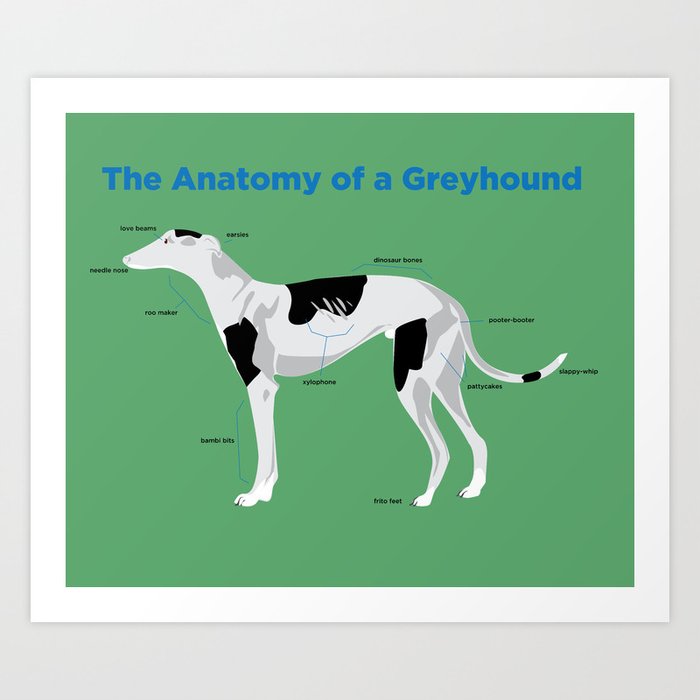
Greyhound Anatomy Anatomical Charts & Posters
Overview The greyhound is a large dog breed and is world famous for their speed. Greyhounds were originally bred as hunting dogs for deer, foxes, and rabbits which required the breed to be both agile and fast.

Daniel Lin (Tien Yu) Greyhound Anatomy Analysis
hound. Greyhound, the fastest of dog breeds and one of the most ancient, long symbolic of the aristocracy. Its likeness appears on an Egyptian tomb dating from about 3000 bce. Streamlined, slender, and strong, the Greyhound can attain a speed of about 45 miles (72 km) per hour. It has a narrow head, a long neck, a deep chest, long muscular.